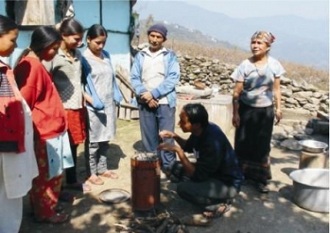PLoS One. 2013;8(2):e55670. doi: 10.1371/journal.pone.0055670.
Longitudinal Relationship between Personal CO and Personal PM2.5 among Women Cooking with Woodfired Cookstoves in Guatemala.
McCracken JP, Schwartz J, Diaz A, Bruce N, Smith KR.
Department of Environmental Health, Harvard School of Public Health, Boston, Massachusetts, United States of America.
Household air pollution (HAP) due to solid fuel use is a major public health threat in low-income countries. Most health effects are thought to be related to exposure to the fine particulate matter (PM) component of HAP, but it is currently impractical to measure personal exposure to PM in large studies. Carbon monoxide (CO) has been shown in cross-sectional analyses to be a reliable surrogate for particles<2.5 µm in diameter (PM) in kitchens where wood-burning cookfires are a dominant source, but it is unknown whether a similar PM-CO relationship exists for personal exposures longitudinally.
We repeatedly measured (216 measures, 116 women) 24-hour personal PM (median [IQR] = 0.11 [0.05, 0.21] mg/m) and CO (median [IQR] = 1.18 [0.50, 2.37] mg/m) among women cooking over open woodfires or chimney woodstoves in Guatemala. Pollution measures were natural-log transformed for analyses. In linear mixed effects models with random subject intercepts, we found that personal CO explained 78% of between-subject variance in personal PM. We did not see a difference in slope by stove type.
This work provides evidence that in settings where there is a dominant source of biomass combustion, repeated measures of personal CO can be used as a reliable surrogate for an individual’s PM exposure. This finding has important implications for the feasibility of reliably estimating long-term (months to years) PM exposure in large-scale epidemiological and intervention studies of HAP.



